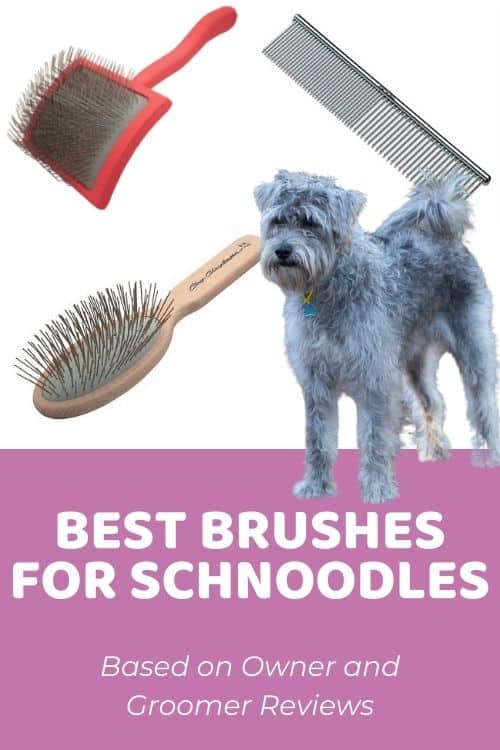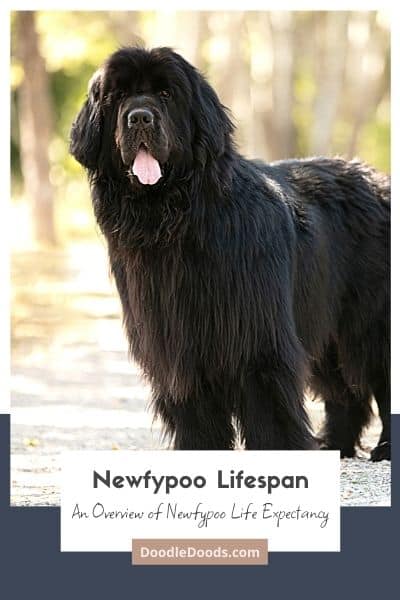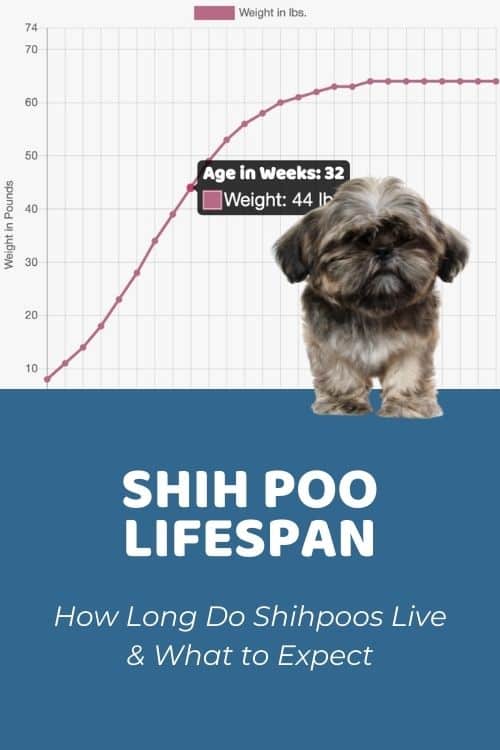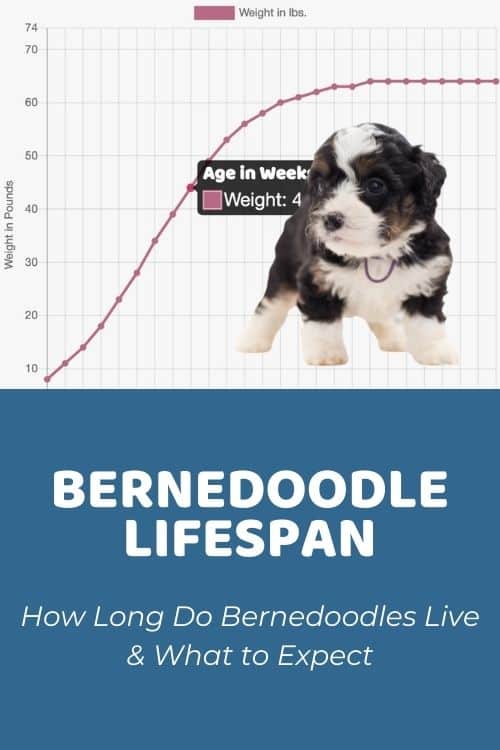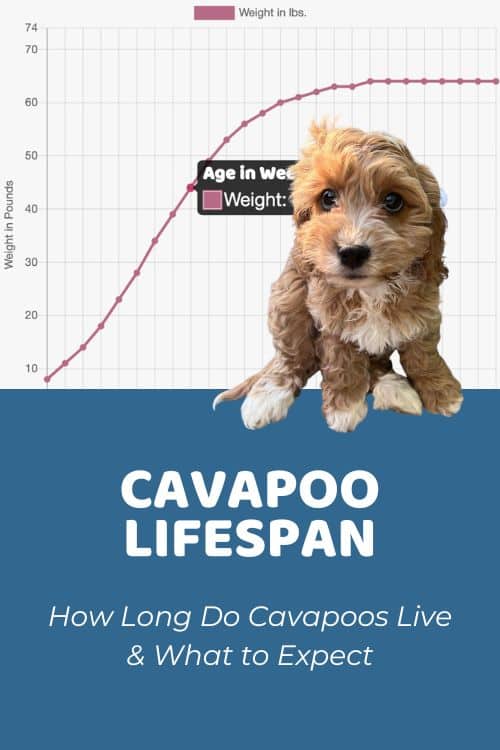Do you have a Schnoodle? If so, you’re probably wondering just how long you have with your furry friend. In this guide, we’ll take a look at the average Schnoodle lifespan and discuss the main factors that could affect your pup’s life expectancy. We’ll also take a look at some of the things that you can do to extend your Schnoodle’s lifespan and improve their overall quality of life. Let’s get into it.
Table of Contents
- Schnoodle Lifespan: How Long Do Schnoodles Live?
- Life Stages Of A Schnoodle
- Schnoodle Lifespan: Common Signs Of Aging In Schnoodles
- Common Health Problems In Schnoodles
- Extending Your Schnoodle’s Lifespan
- Schnoodle Lifespan: Frequently Asked Questions
- Final Thoughts
Learn How to Care for Your Doodle Puppy!

Perfect for first-time Doodle parents, get ALL your questions answered, including questions new Doodle parents don’t even think to ask.
Plus, get $700 worth of Bonus Materials for FREE, including:- Doodle Parenthood Community and Support Group ($190 value)
- Doodle Puppy Growth Tracker ($20 value)
- EMERGENCY Cheatsheet: When To Call The Vet Immediately ($50 value)
- HELP! Button ($145 value)
- And SO MUCH MORE!
Schnoodle Lifespan: How Long Do Schnoodles Live?
The Schnoodle is a cross between the Poodle and Schnauzer. Both Poodles and Schnauzers come in various sizes, so there’s a Schnoodle pup for almost anyone. We can cross Toy Poodles with Miniature Schnauzers to get a pocket-sized Toy Schnoodle. Or, by crossing a Standard Poodle with a Giant Schnauzer we’ll get humongous Giant Schnoodles.
Regardless of their shape and size, Schnoodles are known for their friendly and sweet nature. They’re quite outgoing and active dogs that thrive in human company. They’re just as loyal as the Schnauzer parent, and equally intelligent as the Poodle parent. Let’s not forget, one of the main appeals of the Schnoodle is its low-shedding coat, inherited from the Poodle’s side of the lineage.
Moreover, another great advantage that crossbreeds like the Schnoodle have is that they’re thought to benefit from something called hybrid vigor. Hybrid vigor means that crossbreeds are less likely to inherit breed-specific health conditions thanks to their more diverse genetic pool. For this reason, we can generally expect Schnoodles to live long and healthy lives, provided that you take good care of your pup.
So, how long do Schnoodles live? The average Schnoodle lifespan ranges from 12 to 16 years. Even in this area the Poodle lineage does have its perks, as the Schanuzer’s lifespan ranges between 10 and 14 years. Meanwhile, Poodles have an average life expectancy of 12 to 18 years.
However, this can vary depending on a number of factors, including diet, exercise, size, and genetics. Some Schnoodles may live longer while others may have shorter lifespans.
Factors Influencing Schnoodle Lifespan
Did you know that your Schnoodle’s size can also affect their lifespan? As a general rule of thumb, smaller dogs tend to outlive their larger counterparts. So, we can expect Toy and Mini Schnoodles to live longer compared to their Standard and Giant Schnoodle cousins.
In addition to that, female Schnoodles may also have a slight advantage here, as they tend to live longer compared to male Schnoodles. Obviously, this doesn’t necessarily mean that smaller Schnoodles or females are much healthier than larger Doods and males.
Ultimately, the key to producing healthy and sound puppies lies in extensive health and genetic testing beforehand. This is why responsible Schnoodle breeders in the US test their breeding dogs for various genetic conditions. This is the only way to ensure the health and longevity of their puppies.
So, if you’ve decided to adopt your Schnoodle puppy from a breeder, make sure to ask lots of questions and expect full transparency from the breeder.
Schnoodle Lifespan: How Their Generation Can Play A Role
In addition to all of the above, a Schnoodle’s lifespan can also be influenced by their generation. If you don’t know, hybrid breeds like the Schnoodle and other Poodle mixes can be created by using either purebred parents or Schnoodles.
Simply put, generations tell us how a Schnoodle was bred, and roughly how much of their genetic makeup is made up of either of the purebred parental breeds. Here are the possible Schnoodle generations:
| 1st Parent | 2nd Parent | % Schnauzer* | % Poodle* | |
| F1 Schnoodle (first-generation) | Schnauzer | Poodle | 50% | 50% |
| F1B Schnoodle (first-generation backcross) | F1 Schnoodle | Poodle | 25% | 75% |
| F1BB Schnoodle (first-generation backcross backcross) | F1B Schnoodle | Poodle | 12.5% | 87.5% |
| F2 Schnoodle (second-generation) | F1 Schnoodle | F1 Schnoodle | 50% | 50% |
| F2B Schnoodle (second-generation backcross) | F1 Schnoodle | F1B Schnoodle | 37.5% | 62.5% |
| F2B Schnoodle (alternate cross) | F2 Schnoodle | Poodle | 25% | 75% |
| F3 / Multigen Schnoodle | F1B Schnoodle or higher | F1B Schnoodle or higher | Varies | Varies |
But how does it all matter, anyway? As we learned earlier, Schnoodle’s lifespan could be longer compared to its purebred parental breeds thanks to hybrid vigor. By combining two different purebred dogs, there’s a smaller risk of the puppies inheriting conditions that are common in the purebred parents. However, hybrid vigor starts to diminish with each consecutive generation, meaning that F1 Schnoodles benefit the most out of it.
Life Stages Of A Schnoodle
The Schnoodle’s lifespan can be divided into several distinct life stages. Starting with puppyhood and adolescence, moving into adulthood, and finishing with senior years. If you know what to expect during each of those life stages, you’ll have a much better chance at providing your pup a healthy and comfortable life regardless of their age.
Puppyhood (0-6 months)
Puppyhood is considered from birth and up until 6 months of age, give or take. As smaller dogs tend to grow up faster, they generally also reach adolescence sooner than larger Doods.
In those delicate early days, weeks, and months, puppies are extremely delicate. They’re still growing, developing their immune systems, personality, and behavior. For one thing, you should take your new puppy out to public places or dog parks until they’ve had all of their vaccines.
Nonetheless, early socialization and training is key from day one. Make sure you introduce your puppy to new people, animals, places, and situations. You’ll also want to start with potty training and obedience training from an early age,
During those first 6 months, puppies do lots of growing. They rapidly grow in height and weight, which will gradually start to slow down once they’re about 6 months of age. By this time, Schnoodle puppies have most likely also reached half their adult weight, some are even close to their full adult weight.
The smallest Toy Schnoodles usually reach half their adult weight around 2 to 3 months of age. By the time they’re between 6 and 7 months old, Toy Schnoodles will likely finish growing in height and weight. In contrast, Giant Schnoodles usually get to half their adult weight between 6 and 8 months of age.
For your puppy’s proper development and later quality of life, we recommend you feed your Schnoodle pup a specially formulated puppy food. Moreover, for very small Toy and Mini Schnoodles we recommend puppy formulas for small-sized breeds. Similarly, larger Giant Schnoodles would very likely benefit from puppy formulas made for large-sized breeds.
Adolescence (6-18 months)
Around 6 months of age, puppies will reach sexual maturity. This means that they enter the beautiful teenage period of their lives. Once this happens, it’s time you consult with your vet as to when your puppy should be spayed or neutered.
With all those hormonal changes, puppies are bound to get a bit moody and mischievous. They may act like they’ve forgotten all of their previous training. But, as long as you stay firm and consistent, they’ll soon grow out of it. In fact, age appropriate spay or neuter surgery can also benefit your puppy’s health and behavioral development.
By the adolescence period, smaller Schnoodles are already at their full adult size, whereas larger Schnoodles probably look all lanky with their long legs, huge ears, and puppy-ish looks. Still, growth rates for larger Standard and Giant Schnoodles will gradually start to slow down as well, and you won’t be noticing as many rapid changes in their height and weight.
Adulthood (1-10 years)
Once puppies reach their full size and maturity, they enter adulthood. Again, this is individual for each dog. Smaller Schnoodles enter adulthood faster, whereas for larger Schnoodles it usually takes a bit more time. Now that puppies are leaving their teenage months behind, they usually become calmer as they age and more level-headed.
Based on observed growth patterns of Schnoodles, we can expect Toy and Mini Schnoodles to reach adulthood even before their first birthday. Usually between 6 and 10 months of age. In contrast, larger Standard and Giant Schnoodles usually reach adulthood between their first and second birthday.
Once your Schnoodle pup is all grown up, it’s probably time to switch their puppy food for an adult formula. You may want to consult with your vet about your now fully-grown Schnoodle’s caloric needs, since adults have different dietary requirements than puppies.
As your beloved Dood is nearing its senior years, you may notice the first signs of aging. Your pup may become calmer with each passing year, and their movements may also start to slow down.
Senior (10+ years)
Sometime around their 10th birthday Schnoodles enter their golden years. Although some of them may show signs of aging, they are usually easily manageable or even treatable if paid attention to in a timely manner. For this reason, taking your senior dog for routine vet visits is crucial, as it can greatly extend their quality of life and lifespan.
It’s also very common for senior Schnoodles to overall become slower and calmer and more relaxed as they age. With that being said, since elderly dogs aren’t as active as they used to be, they’re also at a higher risk of weight gain and obesity.
If you’ve noticed that your senior pup is packing on the pounds, you may have to adjust your dog’s food intake accordingly. Obesity and weight gain pave the way to a host of other health issues, such as heart disease, diabetes, and joint problems. All of which can severely affect an older Schnoodle’s lifespan.
Schnoodle Lifespan: Common Signs Of Aging In Schnoodles
Aging is inevitable and it’s best to be educated and informed. Only this way you can be prepared to nurture your Schnoodle during all of its life stages, providing them a comfortable and happy life until the very end.
Common signs of aging in dogs are quite similar to those in humans. There are the usual things, such as becoming slower, having difficulty getting up or laying down. Their coat may also change texture and color as they age.
Additionally, vision problems and cloudy eyes are another telltale sign that a dog is in its senior years. Their hearing may also worsen as they age, or develop lumps and bumps under their skin. Dental problems and bad breath are also common signs of aging in dogs. Elderly dogs can also experience changes in their bathroom habits and bowel movements.
Of course, just like humans, dogs can also experience mental and behavioral changes. These can include sudden fear of familiar things, people, places, or situations. Their sleeping habits may change, and they may get easily confused or anxious in certain situations.
In case you notice any of the physical or mental signs of aging in your Dood, we recommend you consult with your veterinarian about the most appropriate steps. Although you may not be able to treat certain conditions, you’ll likely be able to manage the symptoms and provide your pup a comfortable life.
Common Health Problems In Schnoodles
As we previously discussed, Schnoodles and other Poodle mixes benefit from hybrid vigor. This indicates that crossbreeds are generally healthier, since they inherit the superior traits of each of their purebred parents.
Although hybrid vigor paired with responsible breeding can certainly deliver the results, it doesn’t guarantee that Schnoodle puppies never inherit any genetic conditions or struggle with health problems.
Schnoodles can inherit certain health conditions that are prevalent in either of the parental breeds. The most common health problems in Schnoodles include joint problems like hip dysplasia, elbow dysplasia, and patellar luxation. Eye problems are also common, especially progressive retinal atrophy (PRA) and cataracts. Additionally, Schnoodles are also at risk of epilepsy, diabetes, Addison’s disease, Legg-Calve-Perthes disease, and gastric torsion, also known as bloat.
Like other Doodles, Schnoodles are also prone to allergies and sensitivities, food intolerances, and ear infections. Fortunately, these problems are usually easily manageable with a healthy and balanced diet, and with proper hygiene.
Extending Your Schnoodle’s Lifespan
We’re not going to lie, taking care of a dog is a big responsibility. Although genetics do play a role in a Schnoodle’s lifespan, their environment can also have a great impact. Now that we’ve managed to answer your question – “how long do schnoodles live?” – it’s time we discuss what you can do to extend your Schnoodle’s lifespan and quality of life.
First and foremost, long before you bring your new puppy home, do your research and carefully choose a breeder that follows responsible breeding guidelines. Even though backyard breeders and puppy mills might tempt you with their below average prices, their puppies often come with serious health issues, some of them proving to be fatal soon after.
If you’re on the lookout for a top-quality breeding facility near you, check out our Schnoodle breeder directory broken down by state.
Now that you’ve made sure that the genetics department has been taken care of, you can also implement various methods into your dog’s daily life and environment. Let’s discuss the key things you can do to extend your Schnoodle’s lifespan.
Healthy & Balanced Diet
Needless to say, a healthy and balanced diet is one of the main factors that can affect your Schnoodle’s lifespan and general health. For instance, excessive weight in Schnoodles is directly linked to a variety of health problems.
Firstly, only opt for formulas that have a balanced nutritional profile, and which are made from real, high-quality ingredients. Secondly, we recommend you look for products that have been formulated to meet the nutritional levels established by the AAFCO Dog Food Nutrient Profiles – you’ll find the statement on the product label.
As we mentioned earlier, you may want to opt for a formula specially made for either small or large-sized breeds. Likewise, you should feed your Doodle according to their age and health conditions. In puppyhood, opt for a specially formulated puppy food. In adulthood, you can switch to an adult formula. Finally during senior years, your vet may recommend you to switch to a senior formula.
You’ll also want to avoid any unnecessary filler ingredients, artificial flavors, or colorants. For sensitive Doods like the Schnoodle, these ingredients could trigger allergies, digestive problems, or skin issues.
Daily Exercise & Playtime
Daily walkies and fun games are all part of a healthy and happy Doodle life. After all, keeping the stress levels at a minimum will definitely have an impact on your Schnoodle’s lifespan. Of course, moving is also excellent for weight management, and it also keeps your pup’s joints and bones strong.
However, that’s not the only reason why daily exercise is so important. Curious, active, and intelligent as they are, Schnoodles can easily become bored if they don’t have a chance to let out all that pent up energy. Not only does boredom in dogs lead to undesired and destructive behaviors, it also causes excessive stress on your Dood.
To keep your Schnoodle healthy and happy for years to come, make sure you provide at least 30 to 60 minutes of exercise each day. Smaller Toy and Mini Schnoodles probably won’t need as much as their larger Standard and Giant Schnoodle counterparts, since they simply don’t have the same stamina.
In terms of the mental side of things, Schnoodles also need to be stimulated daily to prevent behavioral problems. Get some interactive games, puzzles, and activity boards, and make sure you dedicate time for training and socialization.
Keeping Track Of Your Pup’s Health
It goes without saying, one of the best ways you can extend your Schnoodle’s lifespan is by keeping track of their health. This includes their weight, growth, appetite, bathroom habits, behavior, and so on. Luckily, many canine diseases are treatable if caught early on. Or at least manageable to an extent.
We also recommend you take your Dood for regular vet checkups to make sure that everything’s okay, about once a year for adult Schnoodles, and every 6 months for elderly pups. During puppyhood, you probably have to take your new pup to the vet more frequently for vaccines and tracking growth. You’ll also have to factor in the spay or neuter surgery some time between 6 and 12 months of age.
Regular Grooming
And finally, any responsible Doodle owner knows the importance of grooming and coat care. Although it may seem a minor thing in terms of health and wellbeing, regular grooming can also have a great impact on Schnoodle lifespan and overall quality of life.
Like other Doodles, Schnoodles need to be brushed daily to prevent stubborn knots and tangles forming into matted hair. Opt for a good quality brush, such as these here, since you will be using this grooming tool the most.
In addition to that, Schnoodles need to have their hair trimmed every few months or so. This is also a good timeline for bathing, but it totally depends on your dog’s lifestyle, activity levels, skin conditions, and hair length. Also, don’t forget to clean and trim your Schnoodle’s ears to prevent ear infections.
Schnoodle Lifespan: Frequently Asked Questions
The average Schnoodle lifespan ranges between 12 and 16 years. The lifespan of a Schnoodle is influenced by various factors, such as their size, gender, and genetics. For instance, smaller Toy and Mini Schnoodles have a longer life expectancy compared to Standard and Giant Schnoodles, a common occurrence in dogs.
Schnoodles are actually considered healthier than their purebred Poodle and Schnauzer parents thanks to hybrid vigor. Nevertheless, there are certain health conditions that could affect the Schnoodle’s life expectancy. The most common health problems in Schnoodles include hip and elbow dysplasia, patellar luxation, eye diseases like PRA and cataracts, digestive problems, ear infections, allergies, sensitivities, and intolerances.
Schnoodle is a loving and loyal companion that enjoys all sorts of fun activities by its human parent’s side. They tend to bond easily with their owners, and overall have a friendly and sweet disposition. However, the key to a great companion pet is early socialization, as this helps puppies get used to interacting with people and other pets, and grow into confident and well-rounded adults.
Final Thoughts
If you’re planning to adopt a Schnoodle or already have one at home, you’ll want to be as educated and prepared as possible to give your pup the best life they could ever dream of. Although the Schnoodle’s lifespan is very much affected by their genetics, their environment also plays a key role here. So, if you’re keen on extending your Schnoodle’s lifespan to have your favorite buddy by your side for years to come, doing those simple yet effective things can have a huge impact.






